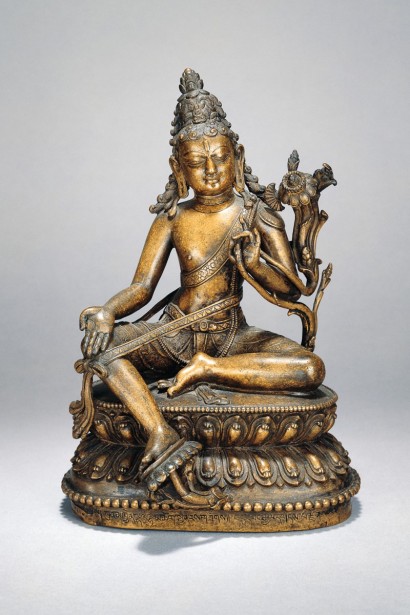India, Bihar or Bengal, Pala period, late 11th–early 12th century; schist; 37 1/2 x 18 1/2 x 6 3/4 in.; Asia Society, New York, Mr. and Mrs. John D. Rockefeller 3rd Collection, 1979.40, photo: Lynton Gardiner, Courtesy of Asia Society, New York.
Bodhisattva Avalokiteshvara
Western Tibet, 15th–16th century; copper alloy; H. 7 1/2 in.; Asia Society, New York, Gift from The Blanchette Hooker Rockefeller Fund, 1994.4, photo: Lynton Gardiner.
This comparison reveals the striking stylistic continuities between Indian Buddhist art and its offshoots in Nepal and Tibet. In pose, gestures, ornaments, and naturalistic modeling, the later metal sculpture closely resembles Khasarpana. The Himalayan nations’ proximity to the Indian subcontinent, as well as an enduring reverence for the Buddhist homeland, in part explains these stylistic and iconographic continuities.





